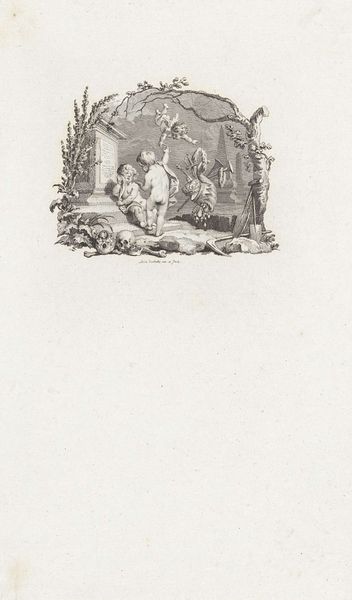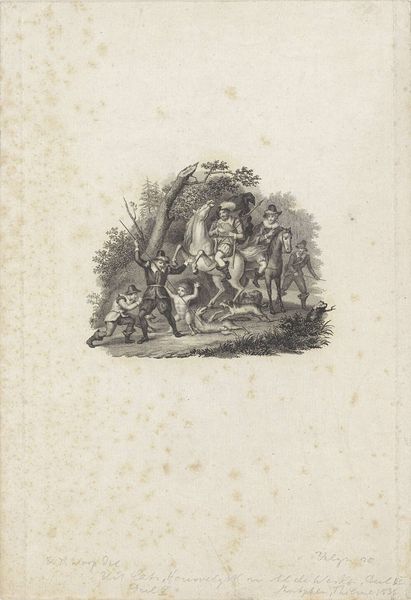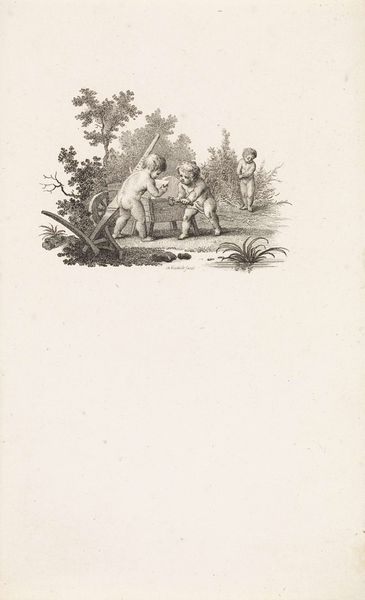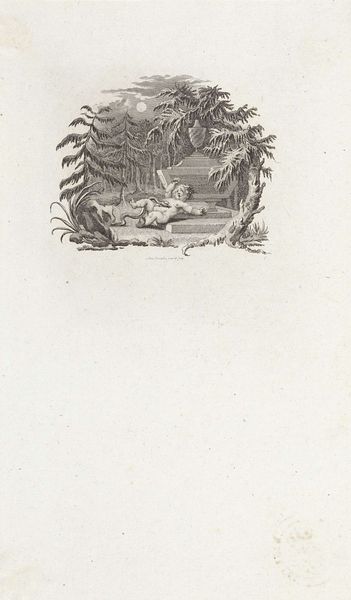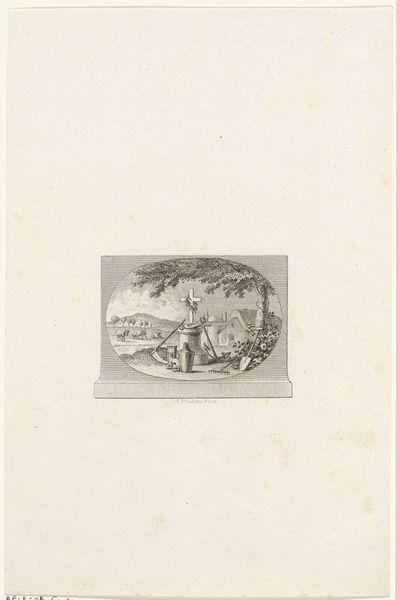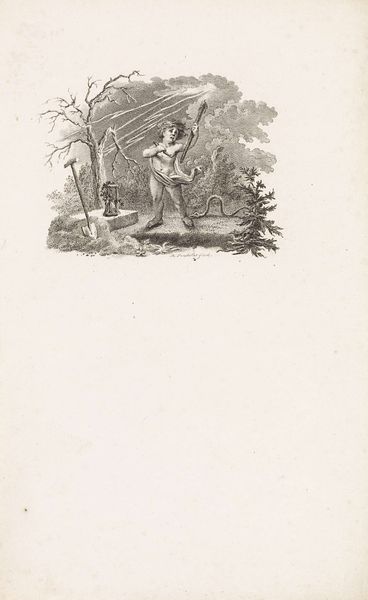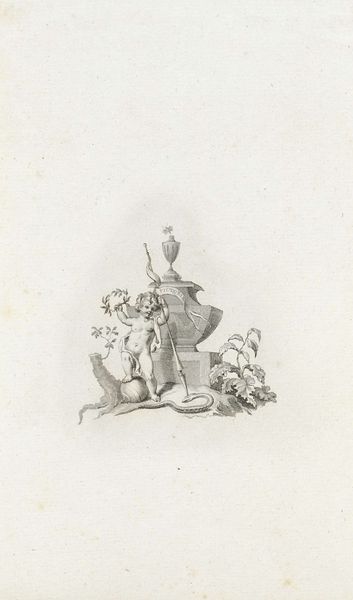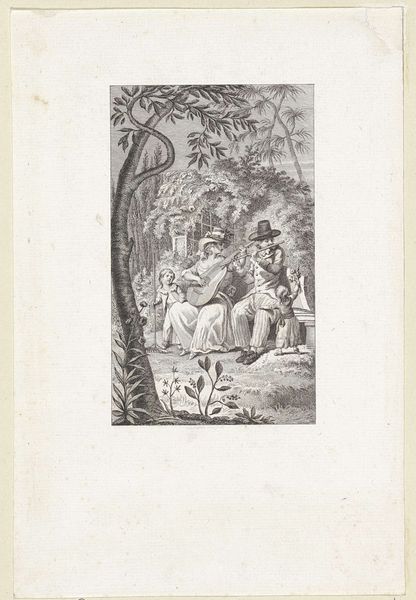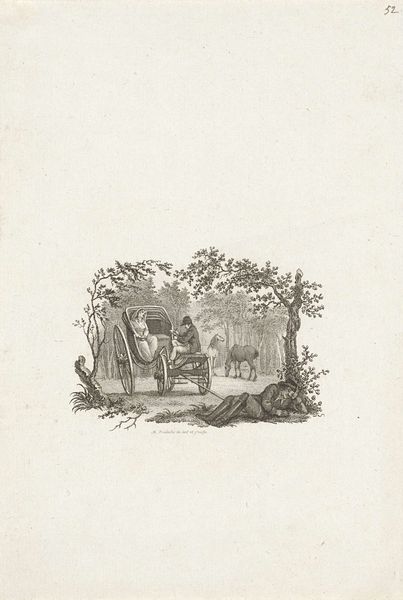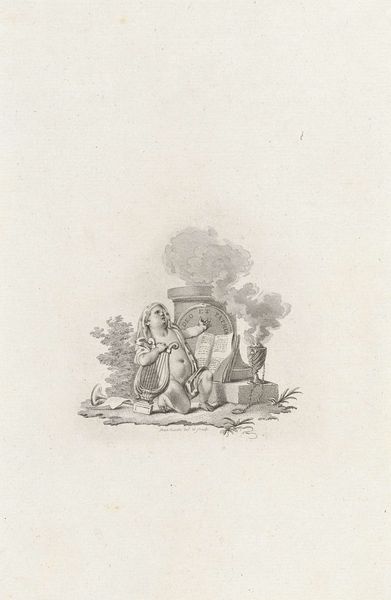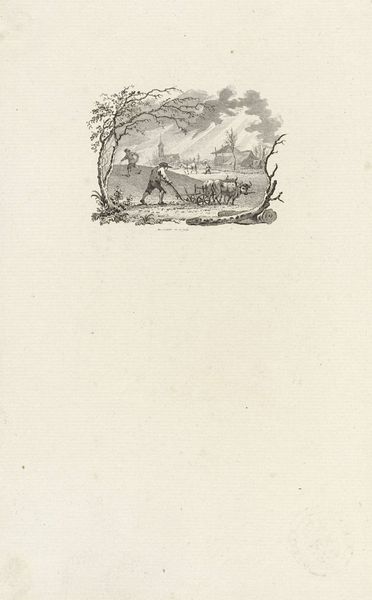
print, engraving
#
neoclacissism
#
allegory
# print
#
old engraving style
#
landscape
#
figuration
#
engraving
Dimensions: height 224 mm, width 136 mm
Copyright: Rijks Museum: Open Domain
Editor: So, here we have Reinier Vinkeles's engraving, "Bosgezicht met twee putti bij een globe en boeken," dating sometime between 1751 and 1816. It's got this dreamy, classical feel. What jumps out at you? Curator: Considering Vinkeles was known for topographical works, how does the presence of the 'Bosgezicht' -the forest landscape- here relate to the burgeoning market for idyllic prints? Look at the *print* itself; engraving allows for precise, repeatable images that bring 'high art' aesthetics to a broader consuming public. The putti are interesting-- what do you suppose their function is in the broader landscape? Editor: I guess they're a little like mascots for...knowledge? There's that globe and books right next to them! And then, the title mentions that we should see the piece as some kind of allegory... Curator: Precisely! Let’s think about that. How does Vinkeles use materials – ink, paper, the very *process* of engraving – to construct a commentary on education and enlightenment ideals then being adopted in Europe? Neoclassicism pulls from very defined tropes and styles; How can an engraving be both commercially viable AND academically respected? Editor: That’s… a really good point. Thinking about the materials, engraving allows these classical scenes to become more widely available; that gives them more power to spread Enlightenment thinking, doesn’t it? Like mass production, almost? Curator: Almost... These kinds of detailed prints also demanded highly skilled craftsmanship. What does this tell us about the artistic labor that was valued during that period? Was engraving considered ‘less than’ painting, or an art form with different skillsets and challenges? Editor: Okay, so, I'm thinking now it’s about making classical ideas accessible. Before, wealthy patrons would enjoy painting only they could see. But through engravings, those values got disseminated and, possibly, reinterpreted on a grand scale? Curator: Exactly. And that circulation transformed those Enlightenment values themselves, making it more widely understood. That means this small print carries a heavy load of cultural work. Editor: This changes how I’ll look at prints now! There’s a lot to unpack when you consider the process and the intended audience! Curator: Agreed! It invites more thought about distribution and the accessibility of art!
Comments
No comments
Be the first to comment and join the conversation on the ultimate creative platform.
